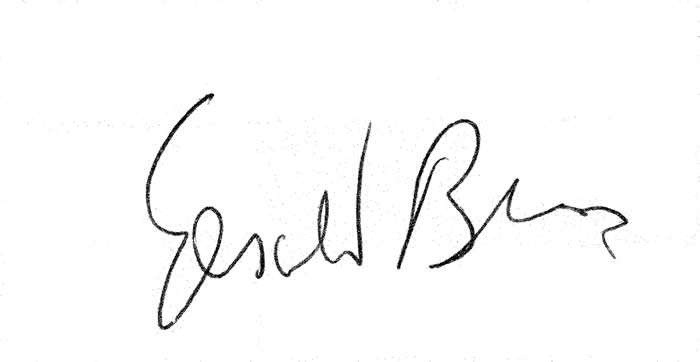
The voice is the shadow of thought. It even registers, displays,
the function of a word -- this-here word, in place an adjective,
Whitman, even Dickinson, wrong to pretend if one rides over them
they'll be there still, as when the cat brings in a bird it may not
matter that it is dead. The crania of birds, unlike the octopus, issue
in a beak they wear like spectacles. The puzzle of skulls that gaze out,
that seem so open to experience, that which returns our gaze not really there
but still a shape, as if King Kong's liana bridge transects a septum.
There will be orchids, needless set-dressing wired to the vines, mostly
not even registering on camera, old rug photographed in greenish collotype,
something of the tint I gave to Doris Cross's work in the museum catalogue
and printed the text in too, her pieces so incorporating printed text
pulled out of Webster. Some cat might sit on the rug, white streak up its nose,
licking a white paw, functioning as dazzle-paint imposed on arabesques
printed by accident, like a hair on the plate or patch of damp
broke into to reveal a charnel subject, white flecks on ink for jewel-like decay.
The illustrations in Poe, Valdemar collapsing into goo, omit the outdoor bits,
his Ms. ship "freighted with cotton-wool and oil" (and a few cases of opium)
which, struck, propels him to the rigging of a ghost-ship. Crabs in the water
signify proximity of reef or land, tick-like shapes awash in emerald.
As we approach, at dizzying speed, the Pole, our mass distends, the mast itself
frangible as balsa, a doubloon spiked to it the size of a small pie-plate.
The journey: "Here" and "there" appear to be useful in many languages; "now"
is not. Heidegger's acute on the first pair -- when he thinks profoundly
about the other the sound you hear is overload, eternal return of a bother.
The trip from here to there can carry something besides consciousness, of
place displaced, say cotton-wool and oil, black clothes with silver buttons,
a page's or chorister's ruff. Entering a room you stop a yard inside,
not wary but still, case it as much for who's there as the mood of the place,
so your "now" is "here," body among bodies in Cafe Lena or hell as if
you walked into a Cézanne. Village types play cards or listen to poetry.
Young Shakespeare hears the mermaid singing on a dolphin. Hamlet and Antony
were there then. Beauty is truth, nine stitches save one outside of time,
the smile when a really good writer imagines the curve of a work seraphic.
Swinburne humbles himself to his wish, throws himself into the sea. Cézanne
paints the sea as that to which objects are in relation, as tinsellated inlets
seem to carry, as if floating, in one kind of light a multitude of feathers.
On the beach a crab, its limbs vaguely waving, is eaten by two birds, one old, one younger.
Johnson's face in Carlyle's study is "purple and sea-green"; so are the cracks
in the black skull of Death in the first-edition "Ancyent Marinere." They reappear
as that to which white powder changes Jekyll's beverage, as if the faces
in Romance were somehow like an Iris (one thinks of Eliot's green face powder.)
I think of it. The relation of the symbolist is somehow always personal.
So to me it's life or death, the changes in diction consequent on Wordsworth
as if the wisp of perfume of a bodily presence in one's bed might better
be discussed than laid. As well describe the color of the walls in Mallarmé's
empty rooms, define the species meant by its conventional flora, Morris's
morning-glories frameworks for contrasting inks. That they are empty is prior.
So on a lawn at evening in some soggy garden, a twilit sundial useless as if
it were indoors, the light that diffuse, serves as an accent, printed flower relieving ferns
about the time when purple and green become a single color. Shadows are
the words for shadows. Poe saw them intersect, cut words apart from speech.
Copyright Gerald Burns 1995-1997